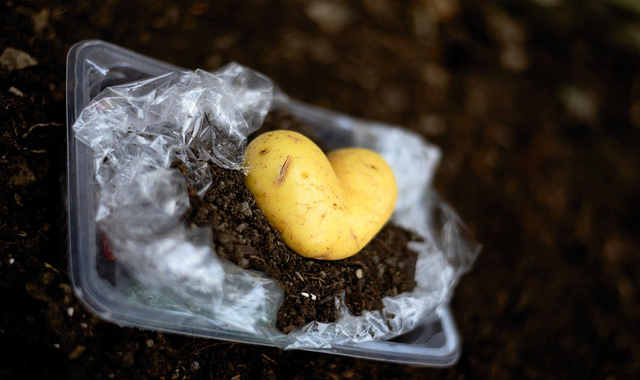Harmful Effects of Plastic Pollution on Human Health: Plastics are very beneficial as they are cheap to manufacture than glass, they are durable, they are lightweight and strong, and they are also resistant to corrosion. Their usage and disposal unfortunately have become unsustainable leading to plastic pollution. In the wake of Covid 19, millions of disposable masks and plastic gloves have been produced to counter the spread of the virus, leading to even more pollution of the environment by plastic masks. Plastic pollution hinders the achievement of the Sustainable Development Goals by adversely affecting the environment and human health.
The majority of chemicals used to manufacture plastics are toxic to humans. These toxins are believed to find their way into the food chain and even into drinking water through leaching. Microplastics are the most notorious form of plastic pollutants and they do have potential adverse health effects on human health. Below are 10 Harmful Effects of Plastic Pollution on Human Health
1. Foodborne Diseases and Food Poisoning.
Studies conducted have shown that 10% of all municipal waste is plastic waste. Treated sewage used for irrigation can constitute a large number of microplastics that carry disease-causing organisms on their fragments. These disease-causing microorganisms e.g. bacteria can get into food and when ingested will cause food-borne diseases like Salmonella typhi to humans. Some of these pathogens cause food poisoning.
2. Vector-Borne Diseases.
According to Frontiers in public health journal solid waste and plastic pollution are risk factors for vector-borne diseases. Plastic wastes disposed in unsanitary manner encourage breeding of vectors that transmit diseases e.g., Malaria.
3. Respiratory Diseases and Breathing Problems.
Plastics are emerging as a potential air pollutant. Breathing problems can result from inhaling toxic air. Recent studies have shown that nano plastics dispersed in the atmospheric air are easily inhaled. These nano plastics can injure lungs and the alveoli when breathed in. Long-term exposure to these nanoparticles can lead to different cancers of the respiratory system an Harmful Effects of Plastic Pollution on Human Health.
4. Eye Irritation and Vision Failure.
When chlorinated plastics are burnt in open dumps, the smoke released consists of toxic gases that irritate the eyes. Continued exposure to these toxic gases can lead to vision failure and vision impairment an Harmful Effects of Plastic Pollution on Human Health
5. Physical Injury
Unsafe disposal of plastic waste can cause physical injury to people. Dumping of wastes into water sources can sometimes lead to flooding in the adjacent land. This will lead to displacement, injury, and even death. Plastic containers disposed of in water sources that act as recreational points can injure swimmers. Tripping and falling due to improperly disposed of plastic waste are also common.
6. Endocrine Disruption.
Some components that makeup plastics are very toxic to the hormonal system in humans, the endocrine system. These toxic chemicals alter and disrupt the functioning of the endocrine system. Substances like phthalates and Bisphenol A (BPA) found in plastics are some common endocrine disruptors. These endocrine disruptors affect the normal development of the brain, the reproductive organs, the immune system, etc.
7. Birth Deformities.
Phthalates, a compound that makes plastics more flexible can be ingested through contaminated food in food packaging material or dermal uptake through personal care products and cosmetics. These toxic chemicals can easily cross the placental walls and into the bloodstream of a growing foetus causing abnormalities during the first stages of fetal development an Harmful Effects of Plastic Pollution on Human Health.
8. Skin Diseases and Cancers.
Testicular dysgenesis syndrome is a condition in males that result in alteration of sperm characteristics and other reproductive abnormalities as a result of exposure to phthalates. This condition can go on to advance to testicular cancer. Skin diseases as a result of exposure to toxic chemicals in plastics are also common. Some of the toxic plastic additives when released into the environment and get in contact with the skin cause skin lesions, rashes, and allergies. Prolonged exposure to these toxic chemicals can lead to skin cancers.
9. Malnutrition.
In most developing countries, many people directly depend on environmental ecosystem services as a source of their livelihood. When terrestrial and aquatic systems are polluted with plastic waste, these people’s source of livelihood is compromised. Contamination of food and water resources with microplastics limits the usage of these resources and therefore leads to food poisoning. When plastic waste in lakes kills fish that people depend on for food, people will go hungry and children will suffer from malnutrition if there is no other source of food.
10. Psychological Stress, Anxiety, And Mental Health Issues.
The production of plastics leads to the emission of toxic pollutants into the atmosphere, land, or waterways. For communities that directly depend on these systems to earn a source of livelihood e.g. through fishing, it can become very stressful to find another source of income to sustain their lives. When the integrity of these systems is compromised by pollution, some people become completely destitute and get consumed by poverty.
11. Heavy Metals Toxicity (Harmful Effects of Plastic Pollution on Human Health).
Fracking is one way to produce oil and gas used to manufacture most plastics. This process is resource-intensive and what follows is usually a release of extremely toxic heavy chemicals. These chemicals pollute air, land, and underground water and when ingested will lead to heavy metal toxicity in humans. Heavy metals have been linked to most cancers even in trace amounts.
Image by congerdesign from Pixabay







